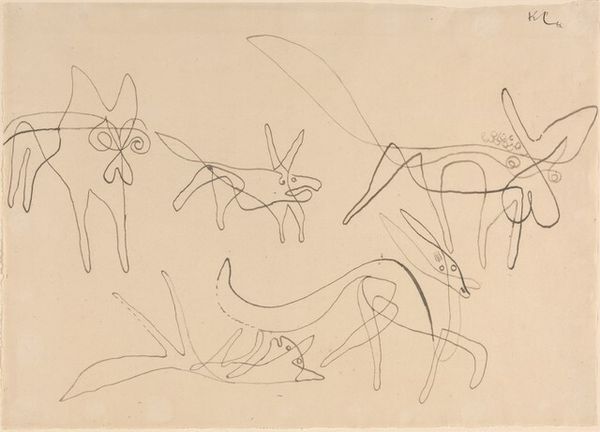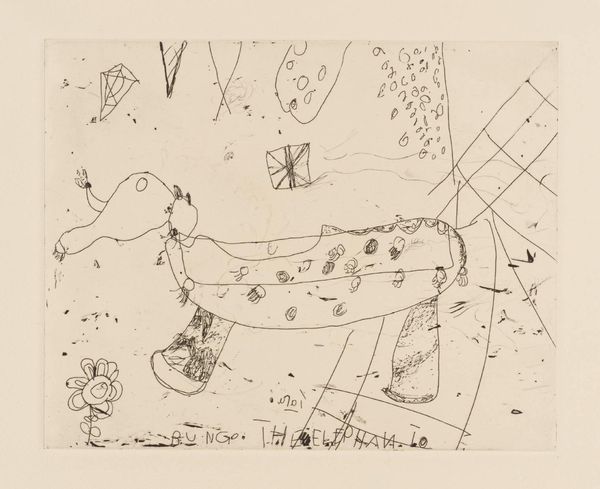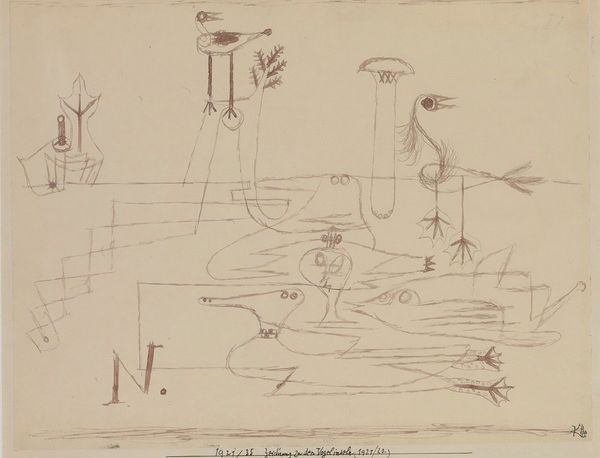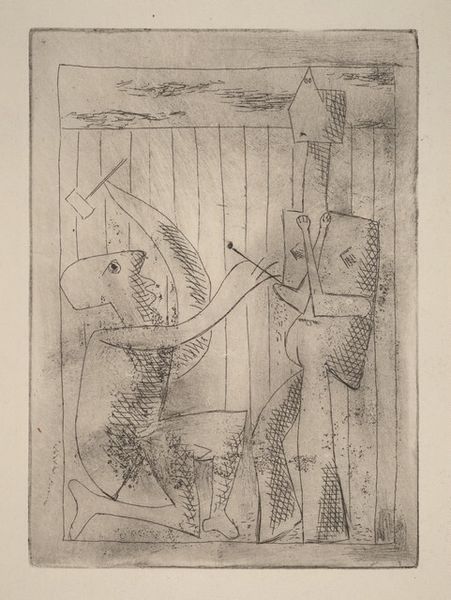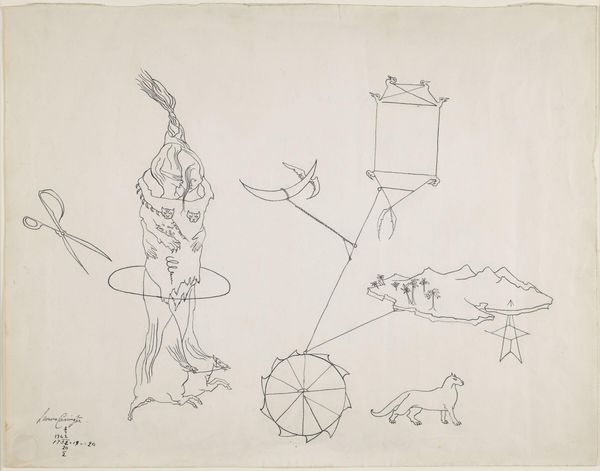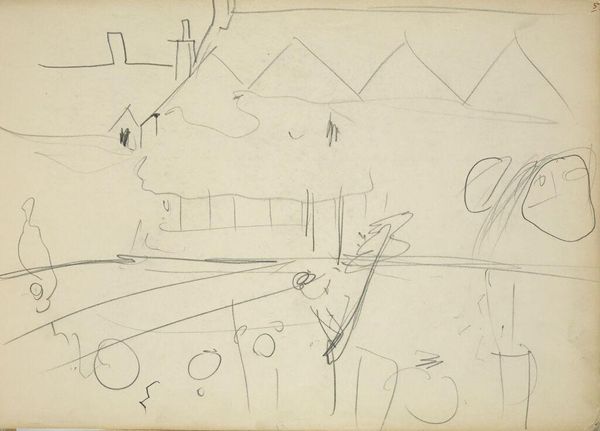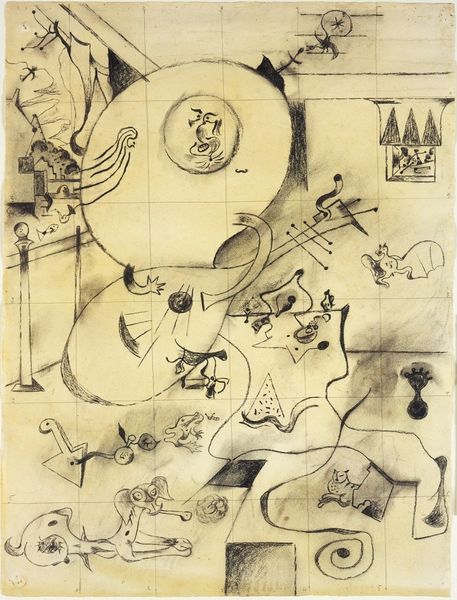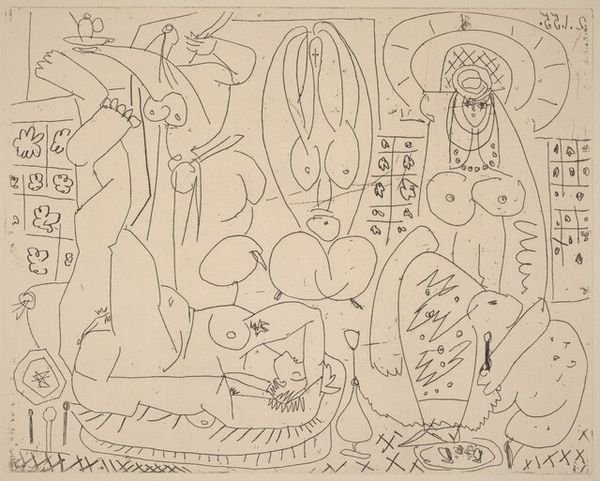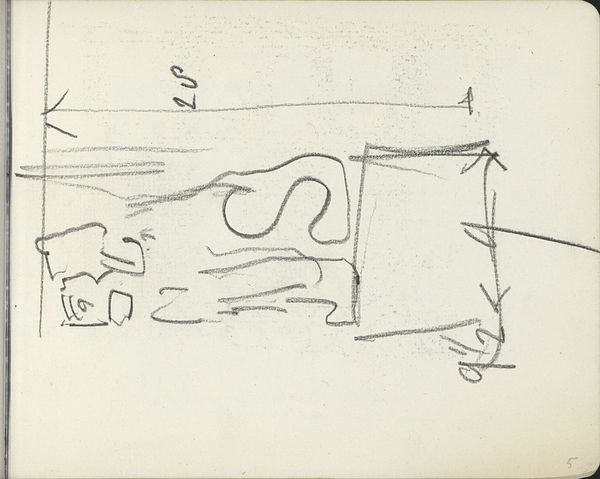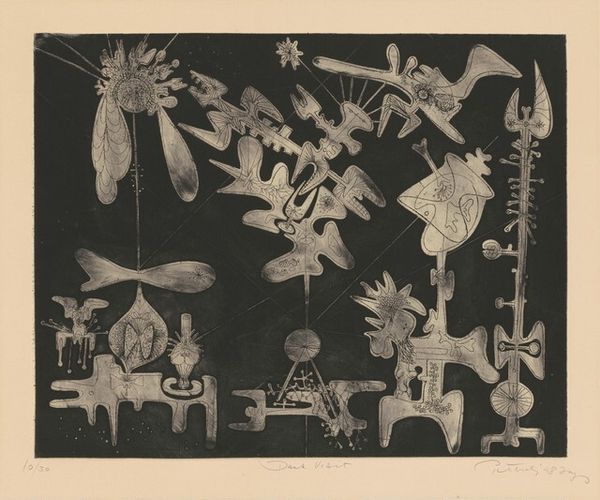
drawing, print, etching
#
drawing
#
narrative-art
# print
#
etching
#
figuration
#
abstraction
#
line
#
modernism
Dimensions: plate: 15 x 17.3 cm (5 7/8 x 6 13/16 in.) sheet: 29.3 x 38.9 cm (11 9/16 x 15 5/16 in.)
Copyright: National Gallery of Art: CC0 1.0
Curator: What an intriguing scene! The whimsical drawing entitled "Untitled (Man and Woman Walking a Dog)," etched around 1930 by Alexander Calder, presents us with an almost dreamlike tableau. Editor: It feels quite unsettling, actually. There’s something unnerving about the flatness, the simplified forms. It reminds me a bit of outsider art, with a modern sensibility. Curator: Interesting you say that. Looking closely at the printmaking process, you see Calder using etching to create a rather raw and unrefined image. Consider that etching involves coating a metal plate, scratching into it, and then using acid to bite the exposed lines. It is traditionally used to reproduce images or make illustrations but he takes it and renders it to something more simple. The very process invites accidental marks that become part of the finished work. This highlights materiality through both the visible and practical act of its making. Editor: Yes, but what is it communicating? To me, this image is teeming with latent sexuality and social anxieties. The starkly drawn figures of the man and woman, especially the woman's exaggerated form, and the snake, are so openly carnal. Curator: Indeed. There's a fascinating contrast at play. Calder's use of the line, seemingly spontaneous and free, disguises a very careful construction. Editor: The social aspect is worth a second look. What kind of people would feature themselves alongside domestic dogs and then add things like serpents. What might that tell us about this image? I notice the inclusion of an affluent building structure in the background; it provides more information about the place and culture in the image. Curator: What do you think it is suggesting about these subjects' relation to their surroundings? It's a simple drawing with potentially strong cultural narratives. Editor: Possibly how human nature contrasts with its setting. The wild alongside the domestic, how social constructs and natural expression conflict. Calder almost appears to hint toward Freudian and sociological frameworks in this artwork, to convey commentary through simplistic designs. I suppose that Calder can get at that so well through such minimalist rendering makes this etching really stick. Curator: Indeed. By stripping down representation, Calder gives form to emotions or psychological realities through the essential aspects of production—making an interesting dialogue possible! Editor: Right, this conversation has truly brought this piece alive for me. Thank you!
Comments
No comments
Be the first to comment and join the conversation on the ultimate creative platform.
